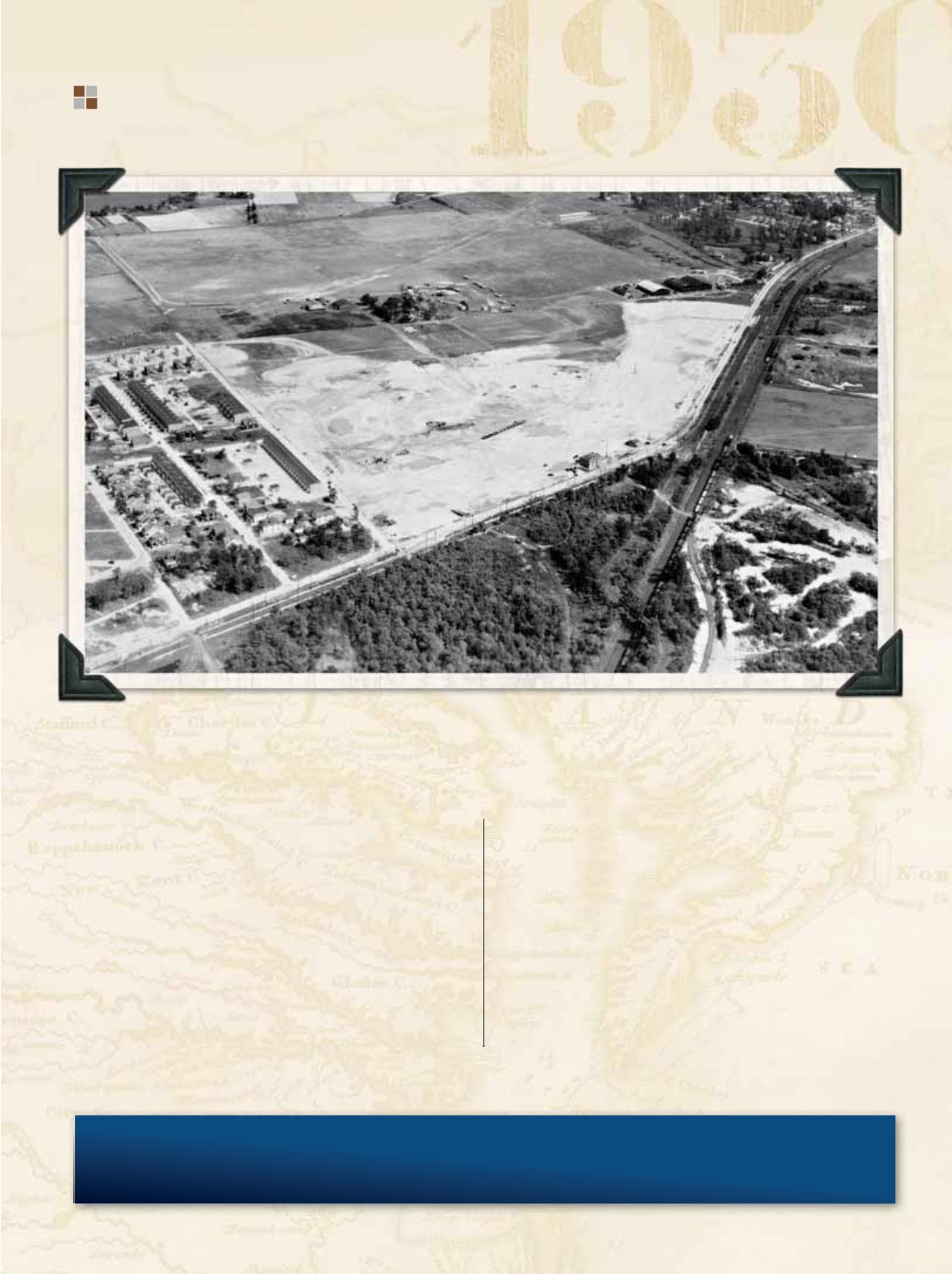
port
VIEW
L
ogan Field, once located across the street from what
is now Dundalk Marine Terminal, was an airfield with
a short but spectacular history that is all but forgotten
today. Built in 1920, it was originally called the Dundalk
Flying Field, but by the end of the opening day air show on July 5
of that same year, the name was changed to Logan Field.
That day, Army Lt. Patrick Logan was performing in his World
War I French plane, the Red Devil, when he crashed on the field
in front of hundreds of spectators. He died there and organizers
quickly rededicated the field in his honor.
Logan Field was a busy airfield during the 1920s, offering
regular air service to New York, Atlantic City and Miami. Shown
STORY BY KATHY BERGREN SMITH
Short Life of Dundalk Airfield Included Early Tragedy
here in 1930, it became the home of the newly formed Aviation
Division of the Maryland National Guard and hosted aviation
luminaries such as Charles Lindbergh and Amelia Earhart.
Meanwhile, the Baltimore Municipal Airport was being
constructed at what is now Dundalk Marine Terminal, with a
large Art Deco passenger terminal. As the newer airport became
more active during World War II, Logan Field was converted into
a prisoner-of-war camp housing German and some Italian soldiers
who were sent to work on local farms.
After the war, the airfield was converted to a residential
neighborhood called Logan Village.
[
44
]
The Port of Baltimore
■
January/February 2014


